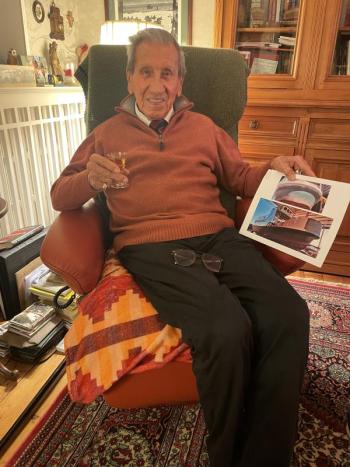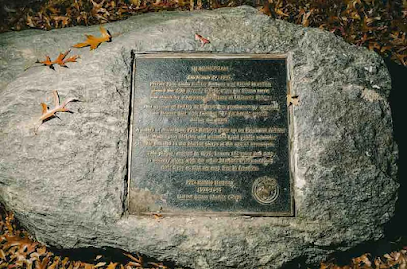Robert Lipsyte, Goodbye to All That
Though I was no athlete — or how would you explain all those grounders that went through the legs of second baseman Tom Engelhardt or why, when I got older, I so often ended up banished to, yes, right field? — I grew up in a world of sports. As a kid in the 1950s, so long before the online universe made more or less everything available, I can remember having one of those old wooden radios with the golden dials behind my bed. At night, I would keep my ear to the radio, so I could hear the Brooklyn Dodgers night games without my parents realizing I was awake. After all, I had to know what right fielder Carl “the Rifle” Furillo did, not to speak of Roy Campanella, Gil Hodges, Don Newcombe, Jackie Robinson, and so many other players of that distant era. And of course, I’d regularly check the box scores in the paper, probably the New York Post (since my mom drew political caricatures for that liberal rag of the 1950s).
I remember the thrill in high school, though still a Dodgers fan, of going to a New York Giants game and the next day finding myself in a sports photo on the back page of the New York Daily News. (Mind you, I was part of a large outfield crowd watching Willie Mays catch a fly ball and only I knew it was me in that shot.) And yes, when I got older, I read the sports pages of the New York Times, too. As the years went by, that was the place I regularly turned to in the morning before even paying much attention to the front-page news. (I mean, honestly, what could have been more important than the latest in sports, especially when it came to my teams?)
And somewhere in those years, I undoubtedly began reading Robert Lipsyte. After all, when, in 1957, the Dodgers announced that they were deserting the Big Apple for Los Angeles, I felt bereft, betrayed, and bewildered. Then, in 1962, when I was 18, the Mets came to town. I naturally Metified in a major way — and one of the New York Times sportswriters assigned to cover the team that first year was… yes, Lipsyte. And we met, first on the page and years later in person, and I’ve known him ever since. So, who better than that former New York Times sportswriter and columnist, TomDispatch regular, and author of SportsWorld: An American Dreamland to offer a fervent farewell to the sports section of the Times? Tom
Farewell to the New York Times Sports Department
Or Should It Be Good Riddance?
In the spring of 1957, in search of a summer job before heading west to graduate school, I answered a classified New York Times ad for an editorial assistant. The personnel clerk at the paper was condescending. Bachelor’s degrees are a dime a dozen, she told me. For their newsroom, she said, they were looking for Ph.D. candidates and Rhodes scholars. Still, sighing at her own generosity, she let me fill out the paperwork.
I did so, but not being much of a Times reader then, I quickly moved on. I spent the rest of that day filling out other applications around town. When I got home my mother said, “You had a crank call, Bobby. A man said that, if you show up tomorrow and pass a physical, you can start work immediately at the New York Times.”
The physical consisted of nothing more than showing up, and that editorial assistant post turned out to be for a copyboy (no girls allowed then) in the sports department. I hated the job — sharpening pencils, fetching coffee, filling pots of library paste from 7 p.m. to 3 a.m. for a dyspeptic crew of “copy readers” (now, staff editors), who seemed to take joy in molesting the words of superb writers like reporter Gay Talese.
Sixty-six years later, I had a rush of mixed feelings when the Times recently announced that it was going to abolish its sports department. How could they part with such a critical piece of my life? And, by the way, what took them so long?
I had, in fact, long wondered whether the Times needed a sports department. Even back then, marketing polls showed that its readers who were avid sports followers mostly bought tabloids to satisfy their fandom. In-house, in fact, sports was known as “the Toy Department” and often provided a dumping ground for writers and editors who had messed up “outside” (as we sports types called the other Times departments we revered and resented).
Why Cover Sports?
As it happened, that summer job of mine would last 26 years (in two acts with a 20-year intermission) and, in that time, I came to love the majesty of the Times, its sense of mission, and the throb of the news flow. The sports section would be included in my new belief system. When I was anointed a reporter at 21, I felt as if I had been inducted into a knightly order dedicated to Truth and I’ve never been totally deprogrammed.
At the same time, during these past 66 years, even while writing on sports-related topics in genres ranging from art criticism to opera, I’ve continued to wonder about the true purpose of sports coverage. Is it to keep that industry profitable, critique and offer consumer reviews of performance, be that media platform’s most diverting section (like the comics in other papers), provide intelligence for gamblers, or offer real journalistic coverage of a compelling and useful window on society? Or maybe some combination of them all?




















